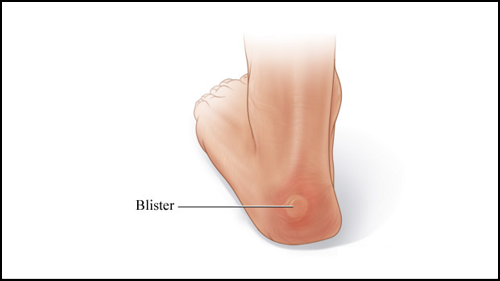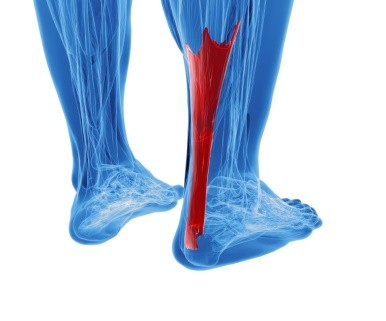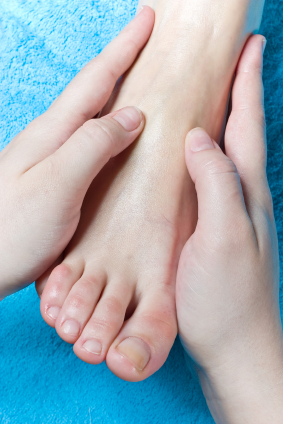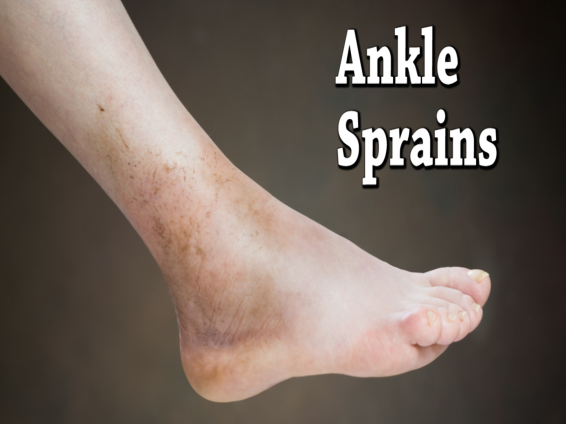Items filtered by date: November 2014
Blistered Feet do not deter Natalie Imbruglia’s Hike across Switzerland
 Natalie Imbruglia revealed extremely swollen and blistered feet after hiking over one hundred miles across Switzerland. As a part of the Strive challenge, the Australian actress and singer embarked on a seven-day journey across Switzerland on August 23rd. The challenge was in support of non-profit organization Virgin Money Giving, which is raising funds for projects dedicated to changing the way young people think. Imbruglia had a physiologist visit and tape up her beaten feet on the sixth day of her journey. The hike spanned from Switzerland’s south-western village of Verbier all the way to Zermatt in the Swiss Alps.
Natalie Imbruglia revealed extremely swollen and blistered feet after hiking over one hundred miles across Switzerland. As a part of the Strive challenge, the Australian actress and singer embarked on a seven-day journey across Switzerland on August 23rd. The challenge was in support of non-profit organization Virgin Money Giving, which is raising funds for projects dedicated to changing the way young people think. Imbruglia had a physiologist visit and tape up her beaten feet on the sixth day of her journey. The hike spanned from Switzerland’s south-western village of Verbier all the way to Zermatt in the Swiss Alps.
Untreated blisters can worsen and make mobility extremely difficult and painful. For quality blister treatment, see one of our podiatrists of Pennsylvania. Our doctors will attend to all of your foot and ankle needs and answer any of your related questions.
Blisters on the Feet
When tight or ill-fitting footwear is worn, many times a foot blister may develop. Blisters can even develop by constant rubbing from the shoe, often times leading to pain.
What is a Foot Blister?
A foot blister is a small pocket that is filled with fluid, forming on the upper most layer of the skin. Blisters are filled with clear fluid, and may lead to drainage of blood or pus if the area has become infected.
How do they Form?
Blisters of the feet are almost always the result of shoe rubbing and constant friction of the skin and material. Long periods of walking in shoes, sandals, or boots which don’t fit properly can result in a blister. Those who often have moisture or humidity in the feet, are prone to blister formation easily.
Prevention & Treatment
Proper care is vital to alleviate pain and prevent infection to the affected area of the foot. The best treatment is to leave them alone. New skin will develop under the blister and during the healing stages, your blister will pop.
For more information about Blisters on the Feet, follow the link below.
If you have any questions please feel free to contact one of our offices, located in Plymouth Meeting and Ambler, PA. We offer the newest diagnostic and treatment technologies for all your foot and ankle needs.
Read more about Blisters on the Feet
Runners May Reduce Tendon Injuries with Orthotics
 Dr. Jonathan Sinclair of the University of Central Lancashire participated in a study concerning runners and Achilles tendon injury. The study found that people who wear orthotics while running could prevent the possibility of Achilles injury. Sinclair used 12 male participants and had them run on a mat with sensors that measured the movement of the foot.
Dr. Jonathan Sinclair of the University of Central Lancashire participated in a study concerning runners and Achilles tendon injury. The study found that people who wear orthotics while running could prevent the possibility of Achilles injury. Sinclair used 12 male participants and had them run on a mat with sensors that measured the movement of the foot.
The study showed that the runners wearing the orthotics were less apt to Achilles tendon injury because of the ease of pressure the insoles provided to the foot. “This probably happens because orthotics offer further cushioning to that already provided by the shoe midsole,” Dr. Sinclair said.
Achilles tendon injuries can be very painful. If you think you have this kind of condition, pay a visit to podiatrist Dr. Michael Newman of Pennsylvania. Dr. Newman can treat your foot and ankle needs.
What is the Achilles Tendon?
The Achilles tendon is a tendon that connects the lower leg muscles and calf to the heel of the foot. It is the strongest tendon in the human body, and is essential for making movement possible. Because this tendon is such an integral part of the body, any injuries to it can cause severe difficulties and should immediately be presented to a doctor.
What are the symptoms of an Achilles Tendon Injury?
There are various types of injuries that can affect the Achilles tendon. The two most common are Achilles tendinitis and ruptures of the tendon.
Achilles Tendinitis Symptoms
- Inflammation
- Dull to Severe Pain
- Increased blood flow to the tendon
- Thickening of the tendon
Rupture Symptoms
- Extreme pain and swelling in the foot
- Total immobility
Treatment and Prevention
Achilles tendon injuries are diagnosed by a thorough physical evaluation. Often the doctor will order an MRI to confirm the diagnosis. Treatment will involve rest, physical therapy, and in some cases, surgery. However, various preventative measures can be taken to avoid these injuries.
For more information about Achilles Tendon Injuries, follow the link below.
If you have any questions, feel free to contact one of our offices in Plymouth Meeting and Ambler, PA. We offer the latest diagnostic and treatment technologies for all your foot care needs.
Read more about Achilles Tendon Injuries
Dark Chocolate May Help Patients with Circulation Difficulties
 A study shows that polyphenols featured in dark chocolate can provide aid for some of the symptoms of peripheral artery disorder (PAD). The study was conducted by Sapienza University scientists and involved 20 participants. Half of the participants were given 1.5 ounces of dark chocolate while the other half were given milk chocolate to consume.
A study shows that polyphenols featured in dark chocolate can provide aid for some of the symptoms of peripheral artery disorder (PAD). The study was conducted by Sapienza University scientists and involved 20 participants. Half of the participants were given 1.5 ounces of dark chocolate while the other half were given milk chocolate to consume.
After eating the chocolate the test subjects were ordered to walk on treadmills for a set amount of time. As the scientists monitored the patients, they found that patients who consumed the dark chocolate had better circulation and were able to walk a little over 10% farther than those who had eaten the milk chocolate.
Poor circulation is difficult to live with. If you have poor circulation in your feet or ankles, consider calling podiatrists Dr. Michael Newman and Dr. Denise Kohler of Pennsylvania. Our doctors can treat your podiatric needs.
Poor Circulation in the Feet
Poor blood circulation in the feet and legs is caused by peripheral artery disease (PAD), which is the result of a buildup of plaque in the arteries.
Plaque buildup or atherosclerosis results from excess calcium and cholesterol in the bloodstream. It usually restricts the amount of blood which can flow through the arteries. Poor blood circulation in the feet and legs are sometimes caused by inflammation in the blood vessels, known as vasculitis.
Causes
Lack of oxygen and oxygen from poor blood circulation restricts muscle growth and development.
It can also cause:
-muscle pain -numbness in legs
-cramps -skin discoloration
-weakness -slower nail & hair growth
-stiffness -erectile dysfunction
Those who have diabetes and or smoke are at greatest risk for poor circulation, or who are over 50.
If you have poor circulation in the feet and legs it may be caused by PAD, and is important to make changes to your lifestyle in order to reduce risk of getting a heart attack or stroke. Exercise and maintaining a healthy lifestyle will dramatically improve conditions.
If you have any questions, please feel free to contact one of our offices located in Plymouth Meeting and Ambler, PA. We offer the newest diagnostic and treatment technologies for all your foot and ankle needs.
Read more about Poor Circulation in the Feet
Ancient Foot Binding Custom Subject of Photographer’s Documentary
 Up until its ban in 1911, foot binding was practiced in China until the 10th century. In ancient times, having small feet was a symbol of status and beauty in women. This status signified a wife who was submissive and did not complain. Performed by mothers-in-law and matchmakers, foot binding was a process that ensured that the woman’s feet did not grow.
Up until its ban in 1911, foot binding was practiced in China until the 10th century. In ancient times, having small feet was a symbol of status and beauty in women. This status signified a wife who was submissive and did not complain. Performed by mothers-in-law and matchmakers, foot binding was a process that ensured that the woman’s feet did not grow.
Hong Kong photographer Jo Farrell documented the last remaining survivors, who are well into their eighties and older. Farrell describes these women as ‘some of the most amazing, kind, compassionate, and generous women I have ever met’, even in spite of the intense pain involved.
Thankfully, foot binding has no place in any kind of everyday foot care. If you are contending with foot or ankle pain, see one of our podiatrists of Michigan Foot and Ankle. Our doctors can treat your foot and ankle needs.
Every Day Foot Care
Often, people take care of their bodies, face and hair more so than they do for their feet. But the feet are a very important aspect of our bodies, and one that we should pay more attention to. After all, without our feet, we would not be able to perform most daily tasks. It is best to check your feet regularly to make sure there are no new bruises or cuts that you may not have noticed before, for example.
For dry feet, moisturizer can easily be a remedy and can be applied as often as necessary to the affected areas. Wearing shoes that fit well can also help you maintain good foot health, as well as making it easier to walk and do daily activities without the stress or pain of ill-fitting shoes, high heels, or even flip flops.
Also, wearing clean socks with closed shoes is important to ensure that sweat and bacteria do not accumulate within the shoe. Clean socks help to prevent athlete’s foot, fungi problems, bad odors, and can absorb sweat. Also make sure that the socks fit properly and are not uncomfortably tight.
If you have any questions, please contact one of our offices located in Michigan. We offer all the latest in diagnostic and treatment technologies to meet your needs.
Read more about Everyday Foot Care
U.S. Gymnast Rachel Gowey sustains Broken Ankle
 Aspiring gymnast Rachel Gowey broke her right ankle after a fall while practicing her beam dismount. The sixteen-year-old was training for the upcoming U.S. Gymnastics Championships when she took the fall and received the broken ankle, joining another prior unrelated ankle injury. Gowey is only participating in two events at the championships as is; with her broken ankle, however, the athlete’s participation in the entire competition may now be in jeopardy.
Aspiring gymnast Rachel Gowey broke her right ankle after a fall while practicing her beam dismount. The sixteen-year-old was training for the upcoming U.S. Gymnastics Championships when she took the fall and received the broken ankle, joining another prior unrelated ankle injury. Gowey is only participating in two events at the championships as is; with her broken ankle, however, the athlete’s participation in the entire competition may now be in jeopardy.
Gowey trains at the gymnasium where Olympic champions Gabby Douglas and Shawn Johnson once trained, under the wing of Coach Liang Chow. Gowey had placed fifth at the international Cup of Jesolo and fourth at the U.S. Classic this year.
To ensure that a broken ankle completely heals, treatment should be sought right away. For assistance, see one of our podiatrists of Pennsylvania. Our doctors will attend to all of your foot and ankle needs.
Broken Ankles
The ankle consists of three bones- the tibia, the fibula, and the talus. The tibia and the fibula are the two bones that connect to your knees. They sit directly above the talus bone, which is protected by a fibrous membrane and allows slight movement in the ankle joint. A break usually occurs in one of these bones after the foot is twisted too far, a strong impact like jumping from a great height, or repeated stresses like running.
Diagnosis
If you suffer an ankle injury, it is essential that you receive a correct diagnosis. One of the first signs that the ankle is broken is an inability to put any weight on it. There will often be severe bruising and swelling at the sight of the injury. Your doctor may also order an x-ray be taken to determine the exact location and extent of the injury.
Treatment
Without proper care, a broken ankle may not heal properly and could cause arthritis and instability later in life. Therefore, seeking proper treatment is essential to making a full recovery.
There a number of steps you can take to accelerate the healing process however. Elevating your feet above your head and icing the ankle can reduce pain and swelling.
For more information about Broken Ankles, follow the link below.
If you have any questions, please contact one of our offices located in Plymouth Meeting and Ambler, PA. We offer the newest diagnostic and treatment technologies for all your foot ankle injuries.
Read more about Broken Ankles
